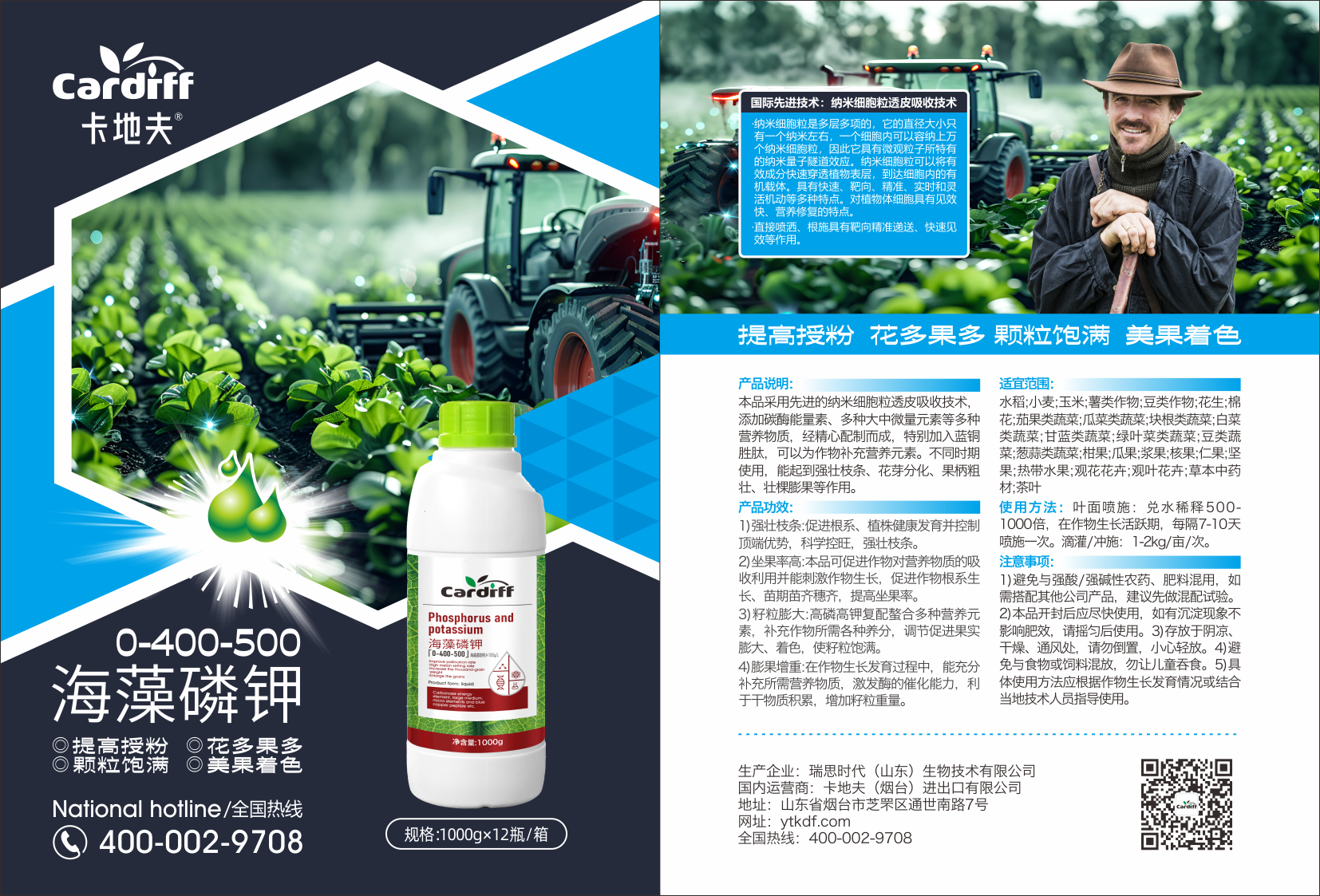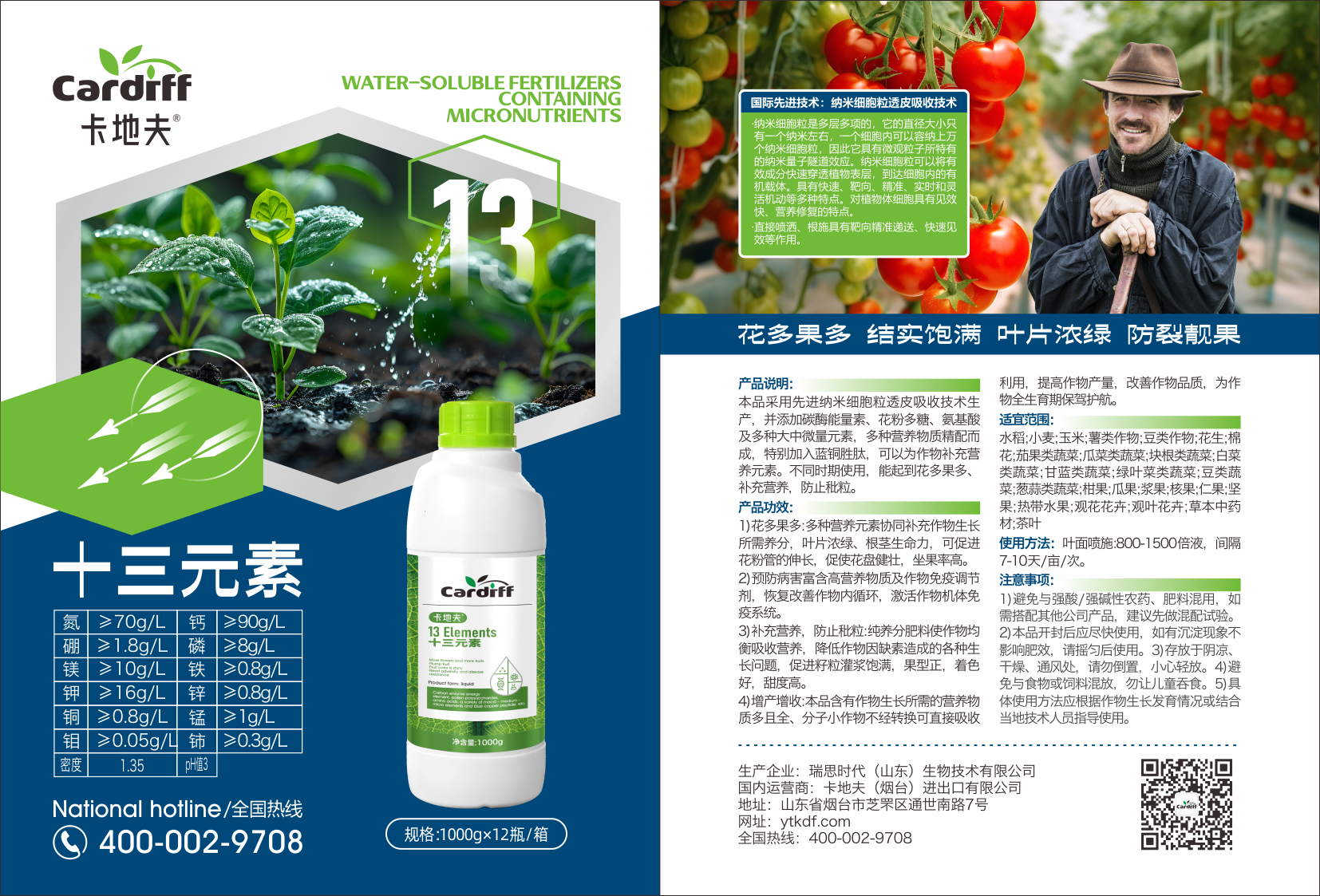为什么我种地不赚钱?农业的利润都去哪里了?
时间:2025-11-13 08:55:24 浏览:6
不少刚入行的种粮大户都有过这样的困惑:年初算着种500亩玉米能赚20万,年底一算不仅没剩钱,还倒贴了5万;有的甚至连种3年,越种越亏,*后只能把地转租出去。明明账本上的利润挺可观,咋到了手里就没影了?其实不是农业不赚钱,而是你没发现,利润正悄悄从这4个“窟窿”里流走。
很多大户觉得“自己从小在地里长,种地还能难住?”,把“规模种植”当成“小户种地的放大版”,结果从一开始就踩了坑。小户种3亩地,靠经验就能管好;但大户种300亩地,拼的是“经营管理”,不是“老经验”,这两种思路差着十万八千里。
先说作物管理,农业不是“种下去就等着收”,而是环环相扣的系统活。去年安徽有个大户,种了200亩玉米,觉得“以前种玉米没那么多讲究”,没提前防锈病,等发现叶子上长黄斑时,病害已经扩散了一半。*后别人亩产1100斤,他只收了800斤,光这一项就少赚了12万。还有的大户施肥“凭感觉”,小麦返青期多浇了一遍水,结果倒伏了一片;花生控旺药打晚了,藤蔓疯长,地下结的果又小又少。这些“亡羊补牢”式的管理,看似是小失误,*后都会变成实实在在的利润损失。
再看用工管理,大户种几百亩地,离不开雇工,但农业活儿“没法像工厂那样计件”,很容易出现“磨洋工”。河南有个种粮户,去年雇人拔花生,按天算钱,有人蹲在地里玩手机,一上午才拔半亩地,原本计划5天干完,*后用了8天,人工成本多花了3万多。还有的大户没提前跟雇工定好标准,收玉米时有人把好粮和碎粮混在一起,导致卖粮时被压价,又亏了一笔。
我们调研过200多个大户,发现管理不善是*能“吞利润”的:同样种500亩小麦,会管理的大户能做到亩产1200斤,人工成本控制在每亩80元;不会管理的,亩产可能只有1000斤,人工成本却飙到120元,一进一出,利润差了整整15万。
农业*怕的就是“看天吃饭”——你算好的利润,可能一场灾就没了。全国每年有近1/6的农作物会遭灾,旱灾、洪涝、冰雹、霜冻,还有突如其来的病虫害,防都防不住。
去年北方多地发大水,河北有个大户种的400亩玉米,全被淹在了水里,等水退了,玉米秆都烂了,几乎绝收。他本来算着能赚30万,*后不仅没赚钱,还赔了地租和农资钱25万。今年南方更糟,38℃的高温连烤了90天,湖南的水稻大户反映,水稻授粉时遇上高温,空壳率比往年多了30%,一亩地少收200斤,100亩地就少赚4万多。
更无奈的是,农业保险常常“靠不住”。很多大户买了保险,真遭灾了却赔不到钱:要么是定损时“拍几张照片就走”,说“没达到绝收标准”;要么是承诺每亩赔950元,*后到手只有9块钱,连买袋化肥都不够。去年河南有个花生大户,遭了连阴雨,花生在地里发芽,找保险公司理赔,对方拖了3个月,*后只给了2000块,连他投入的1/10都不到。这种情况下,天灾的风险只能自己扛,赚得起却赔不起,成了很多大户的心病。
不过也有会防风险的大户:去年同样是水灾,山东有个大户提前给玉米打了芸保凯,玉米抗涝性强了不少,别人的玉米绝收了,他的还收了600斤一亩,虽然没赚多少,但至少没赔本。可见,提前做防灾准备,比遭灾后再补救管用得多。
“种得好不如卖得好”,很多大户辛苦一季,产量上去了,却栽在了行情上。农业行情就像“过山车”,有的作物今年卖5块一斤,明年可能就跌到5毛,差10倍都不奇怪。
就说大姜吧,前几年*高的时候收购价能到4块一斤,山东很多大户扩种,结果第二年供过于求,价格跌到2毛一斤,有的大户拉着大姜去喂猪,连种子钱都收不回来。粮食价格虽然有国家托底,但也有波动:小麦每斤差1分钱,500亩地就差5000块;玉米每斤差2分,1000亩地就差2万块。去年有个河南大户,种了800亩玉米,本来算着能卖1.2元一斤,结果收获时价格跌到1.15元,一下就少赚了4万,相当于白干了2个月。
行情虽然难测,但也有规律可循。周口有个万亩大户马家杰,就靠“逆向思维”避开了行情坑:前年大家都跟风种辣椒,他反而种秋葵,结果辣椒供过于求,价格暴跌,秋葵因为种的人少,成了商超的抢手货,一斤卖5块,比种辣椒多赚了3倍。他说:“别看着今年啥贵就种啥,得想明年啥少就种啥,跟着别人跑,十有八九会亏。”
地租、人工、农资这些“明面上的成本”,大户都会算,但还有很多“看不见的隐性成本”,悄悄把利润偷走了,你可能到*后都不知道钱花在哪了。
首先是收获和储存的损耗。去年湖北有个花生大户,200亩花生长势特别好,眼看能丰收,结果收获前连下7天雨,花生在地里发芽,*后只收了一半,损失了80多万。还有的大户没烘干设备,收了粮食只能靠天晒,遇上连阴雨,粮食堆在一起发霉,有的甚至长出了芽,卖粮时只能当“次粮”,每斤少卖2毛钱,100万斤粮食就少赚20万。
然后是融资成本。现在地租、人工、农资都在涨,很多大户一年要投几十万,资金不够只能借民间借贷,利息往往很高。河南有个大户,去年借了10万民间贷,年利率15%,一年利息就1.5万,*后赚的钱刚够还利息,等于白干了一季。更糟的是,如果行情不好,赚的钱不够还利息,就会越借越多,*后变成“给债主打工”。
还有个大户的“隐痛”——农产品偷盗。农村乡土意识重,如果大户是外来的,很容易被人“惦记”。江苏有个大户种了100亩葡萄,快成熟时每天都丢几十斤,*多的一天丢了200多斤,他装了监控,还雇了人看守,*后虽然止住了偷盗,但已经损失了3万多。有的大户种玉米,收获前被人掰了半亩地;种红薯的,被人挖了几百斤,这些损失看似不大,积少成多也很惊人。
很多人觉得农业利润低,其实不是农业不赚钱,而是没把“利润窟窿”堵上。管理跟不上,就去学经营方法,比如给作物定“全程管理表”,给雇工定“计件工资”;怕天灾,就提前做防灾准备,选抗逆性强的品种,能买靠谱保险就别省;行情难测,就多关注市场数据,别跟风;隐性成本高,就建个小烘干房,提前规划资金,减少借贷。
农业不是“撒了种就等收”的轻松活,而是需要“精打细算、防风险”的生意。大户想赚钱,就得从“种地的”变成“懂经营的”,把每个环节的利润守住,才能让“账本上的利润”变成“揣兜里的钱”。毕竟,种地赚的每一分钱,都是从土里刨出来的,不容易,得好好守着。
Swipe up and down to see the details
Why isn't farming profitable for me? Where have the profits in agriculture gone?
Many new entrants in the grain farming industry face a common dilemma: at the beginning of the year, they calculate that planting 500 acres of corn would yield 200,000 yuan in profit, but by the end of the year, not only do they have no money left, they even lose 50,000 yuan. Some even find themselves losing money year after year, eventually resorting to subleasing their land. The books clearly show considerable profits, so why do they disappear when it comes to pocketing the cash? The issue isn’t that farming isn’t profitable—it’s simply that you haven’t noticed how profits are quietly draining away through these four "holes.".
1. If management lags behind, no amount of land will suffice
Many large-scale farmers believe, "I grew up in the fields, so farming can't be that difficult?" They treat "large-scale planting" as just an amplified version of small-scale farming, only to fall into pitfalls from the very start. A small-scale farmer managing three acres relies on experience to handle everything, while a large-scale farmer tending 300 acres depends on "management skills" rather than "old experience." These two approaches are worlds apart.
Let's start with crop management. Agriculture is not simply "plant and wait for harvest," but a tightly interconnected system. Last year, a large-scale farmer in Anhui planted 200 acres of corn, believing that "there wasn’t much fuss about growing corn before." Without preemptive rust disease prevention, the farmer only noticed yellow spots on the leaves when the disease had already spread halfway. In the end, while others achieved a yield of 1,100 jin (550 kg) per mu, he harvested only 800 jin (400 kg), resulting in a loss of 120,000 yuan from this single factor alone. Another farmer applied fertilizers "by intuition"—overwatering during the wheat regreening stage led to widespread lodging, while delaying the application of growth-inhibiting agents for peanuts caused rampant vine growth and produced smaller, fewer underground fruits. These "after-the-fact fixes" may seem like minor oversights, but they ultimately translate into tangible profit losses.
Looking at labor management, large-scale farmers cultivating hundreds of acres of land rely heavily on hired workers. However, agricultural work "cannot be measured by piecework like in factories," making it prone to "slacking off." In Henan, a grain grower hired workers to harvest peanuts last year, paying by the day. Some workers sat in the fields playing with their phones, barely managing to harvest half an acre in an entire morning. Originally planned for five days, the job ended up taking eight days, resulting in an extra labor cost of over 30,000 yuan. Another large-scale farmer failed to set clear standards with the workers in advance, leading to mixed-quality corn harvests where good and broken grains were combined. This caused a price reduction when selling the corn, resulting in further losses.
We surveyed over 200 large-scale farmers and found that poor management is the biggest "profit eater": For the same 500 acres of wheat, well-managed farmers can achieve a yield of 1,200 pounds per acre, with labor costs controlled at 80 yuan per acre; poorly managed farmers may only yield 1,000 pounds per acre, yet their labor costs soar to 120 yuan per acre. The difference in profit between these two scenarios amounts to a full 150,000 yuan.
2. when disasters strike, a year's hard work comes to nothing
The biggest fear in agriculture is "depending on the weather"—even well-calculated profits can vanish in a disaster. Nearly one-sixth of the country's crops suffer damage annually from droughts, floods, hail, frost, and sudden outbreaks of pests and diseases, all of which are beyond control.
Last year, severe floods hit many areas in northern China. In Hebei, a large-scale farmer's 400-acre cornfield was completely submerged. By the time the waters receded, the corn stalks had rotted, resulting in almost total crop failure. He had initially expected to earn 300,000 yuan, but in the end, not only did he fail to make a profit, but he also lost 250,000 yuan in land rent and agricultural inputs. This year, the situation in the south has been even worse. A 38°C heatwave persisted for 90 consecutive days. Rice growers in Hunan reported that the high temperatures during the pollination period led to a 30% increase in empty grains compared to previous years, resulting in a loss of 200 kilograms per mu. For 100 mu of land, this translates to a revenue shortfall of over 40,000 yuan.
Even more frustrating is the fact that agricultural insurance is often "unreliable." Many large-scale farmers purchase insurance, but when disasters strike, they receive little to no compensation. Either the damage assessment is done hastily—just a few photos taken and the claim dismissed with a statement like "the loss didn't meet the total wipeout standard"—or the promised compensation of 950 yuan per mu ends up being only 9 yuan, not even enough to buy a bag of fertilizer. Last year, a peanut farmer in Henan suffered from continuous rain, causing the peanuts to sprout in the field. When he filed a claim with the insurance company, the process dragged on for three months, and the final payout was just 2,000 yuan—less than one-tenth of his investment. In such cases, farmers have no choice but to bear the risks of natural disasters themselves. With the potential to earn but not afford to lose, this situation weighs heavily on many large-scale farmers.
However, there are also well-prepared large-scale farmers: last year, during the same flood disaster, a farmer in Shandong had sprayed Yubao on his corn in advance, making it much more flood-resistant. While others' corn was completely lost, his still yielded 600 jin per mu. Although the profits were modest, at least there was no loss. This shows that taking preventive measures against disasters is far more effective than remedial actions after the damage occurs.
3. Misjudging market trends can turn a bumper harvest into a "white labor."
"Good harvests are no match for good sales." Many large-scale farmers work hard through the season, increasing production, only to be caught off guard by market conditions. Agricultural prices are like a "roller coaster"—some crops may sell for 5 yuan per pound this year, but could drop to 0.5 yuan next year, with a tenfold difference not being unusual.
Take ginger as an example. A few years ago, the highest purchase price could reach 4 yuan per jin. Many large-scale farmers in Shandong expanded their planting, but the following year, supply exceeded demand, and the price dropped to 2 jiao per jin. Some farmers even had to feed their pigs with ginger, failing to recover even the cost of seeds. Although grain prices are supported by the state, they still fluctuate: a 1-jiao difference per jin of wheat costs 5,000 yuan for 500 mu of land, while a 2-jiao difference per jin of corn costs 20,000 yuan for 1,000 mu. Last year, a large-scale farmer in Henan planted 800 mu of corn, originally expecting to sell it at 1.2 yuan per jin. However, by harvest time, the price had dropped to 1.15 yuan, resulting in a loss of 40,000 yuan—equivalent to working for free for two months.
Although market trends are unpredictable, they still follow certain patterns. In Zhoukou, there is a large-scale farmer named Ma Jiajie who avoided market pitfalls through "reverse thinking." Two years ago, when everyone was following the trend to grow peppers, he chose to grow okra instead. As a result, peppers faced oversupply and prices plummeted, while okra, due to its lower cultivation, became a sought-after product in supermarkets, selling for 5 yuan per pound—earning three times more than peppers. He remarked, "Don’t just plant whatever is expensive this year; think about what will be scarce next year. Following others will almost certainly lead to losses."
4.Hidden costs' stealing profits', you may not have even calculated them
Land rent, labor, and agricultural inputs are the "visible costs" that even large households can calculate, but there are also many "invisible hidden costs" that quietly steal profits, and you may not even know where the money is spent in the end.
Firstly, there is the loss of harvest and storage. Last year, there was a peanut farmer in Hubei province with 200 acres of peanuts growing exceptionally well. They were expecting a bumper harvest, but it rained continuously for 7 days before the harvest. The peanuts sprouted in the ground, but only half of them were harvested, resulting in a loss of over 800000 yuan. Some large households do not have drying equipment, so they can only rely on sun drying to harvest grain. In the event of continuous rain and rain, the grain piles up and mold, and some even grow sprouts. When selling grain, they can only be treated as "secondary grain", selling 20 cents less per kilogram, and earning 200000 yuan less for 1 million kilograms of grain.
Then there are financing costs. Nowadays, land rent, labor costs, and agricultural inputs are all increasing, and many large households have to invest hundreds of thousands of yuan a year. If they don't have enough funds, they can only borrow from the private sector, and the interest rates are often very high. There is a large household in Henan. Last year, they borrowed 100000 yuan from a private loan with an annual interest rate of 15%. The annual interest rate was 15000 yuan, and the money earned was just enough to repay the interest, which was equivalent to working for a season in vain. Even worse, if the market is not good and the money earned is not enough to repay the interest, it will continue to borrow more and more, eventually becoming a "job for creditors".
There is also a hidden pain of a large household - theft of agricultural products. The rural consciousness is strong, and if the wealthy households are from outside, they are easily "remembered" by others. There is a wealthy farmer in Jiangsu who planted 100 acres of grapes. When they were almost ripe, he lost dozens of pounds every day, with the highest loss being over 200 pounds in a single day. He installed surveillance cameras and hired people to guard them. Although he stopped the theft in the end, he had already lost more than 30000 pounds. Some wealthy farmers grow corn, but before harvesting, half an acre of land is taken away by someone; The person who planted sweet potatoes was dug up several hundred pounds by someone, and these losses may seem insignificant, but the accumulation is also astonishing.
To make money from farming, one must first close the "profit hole"
Many people think that agricultural profits are low, but in fact, it's not that agriculture doesn't make money, but that the "profit hole" has not been closed. If management cannot keep up, learn business methods, such as setting a "full process management table" for crops and setting "piece rate wages" for employees; If you are afraid of natural disasters, make disaster prevention preparations in advance, choose varieties with strong resistance, and avoid buying reliable insurance; The market is unpredictable, so pay more attention to market data and don't follow the trend; If the implicit cost is high, build a small drying room, plan funds in advance, and reduce borrowing.
Agriculture is not an easy job of "sowing and waiting for harvest", but a business that requires "careful planning and risk prevention". If a wealthy individual wants to make money, they need to transition from being a "farmer" to a "business savvy", guarding the profits in every aspect, in order to turn the "profits on the books" into "money in their pockets". After all, every penny earned from farming is dug out of the soil, which is not easy and needs to be carefully guarded.







